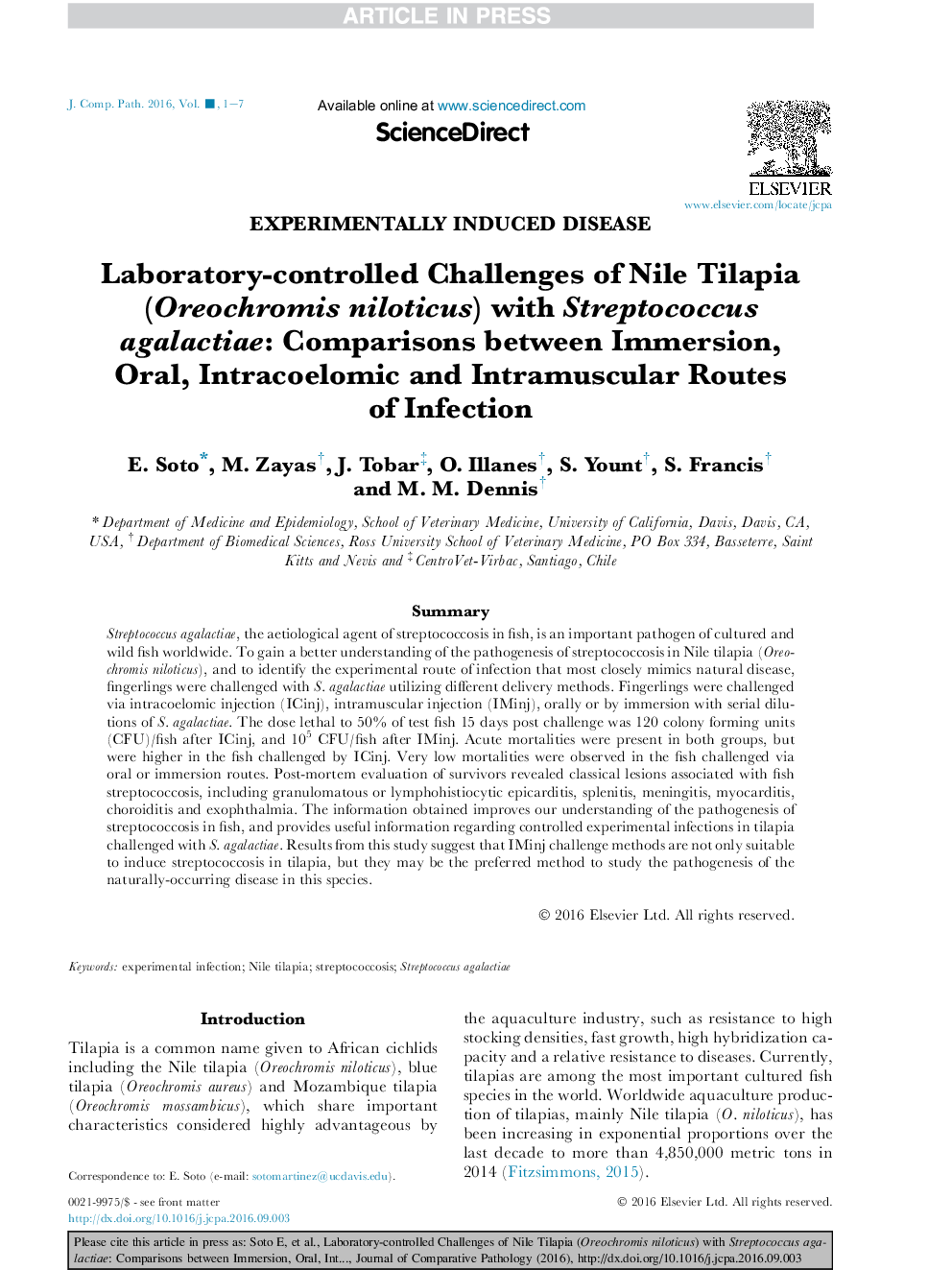| Article ID | Journal | Published Year | Pages | File Type |
|---|---|---|---|---|
| 5541595 | Journal of Comparative Pathology | 2016 | 7 Pages |
Abstract
Streptococcus agalactiae, the aetiological agent of streptococcosis in fish, is an important pathogen of cultured and wild fish worldwide. To gain a better understanding of the pathogenesis of streptococcosis in Nile tilapia (Oreochromis niloticus), and to identify the experimental route of infection that most closely mimics natural disease, fingerlings were challenged with S. agalactiae utilizing different delivery methods. Fingerlings were challenged via intracoelomic injection (ICinj), intramuscular injection (IMinj), orally or by immersion with serial dilutions of S. agalactiae. The dose lethal to 50% of test fish 15 days post challenge was 120 colony forming units (CFU)/fish after ICinj, and 105Â CFU/fish after IMinj. Acute mortalities were present in both groups, but were higher in the fish challenged by ICinj. Very low mortalities were observed in the fish challenged via oral or immersion routes. Post-mortem evaluation of survivors revealed classical lesions associated with fish streptococcosis, including granulomatous or lymphohistiocytic epicarditis, splenitis, meningitis, myocarditis, choroiditis and exophthalmia. The information obtained improves our understanding of the pathogenesis of streptococcosis in fish, and provides useful information regarding controlled experimental infections in tilapia challenged with S. agalactiae. Results from this study suggest that IMinj challenge methods are not only suitable to induce streptococcosis in tilapia, but they may be the preferred method to study the pathogenesis of the naturally-occurring disease in this species.
Related Topics
Life Sciences
Agricultural and Biological Sciences
Animal Science and Zoology
Authors
E. Soto, M. Zayas, J. Tobar, O. Illanes, S. Yount, S. Francis, M.M. Dennis,
